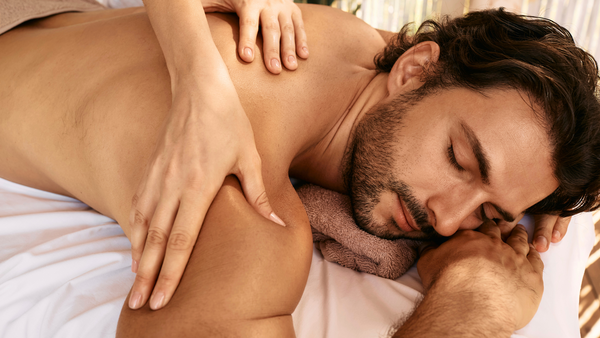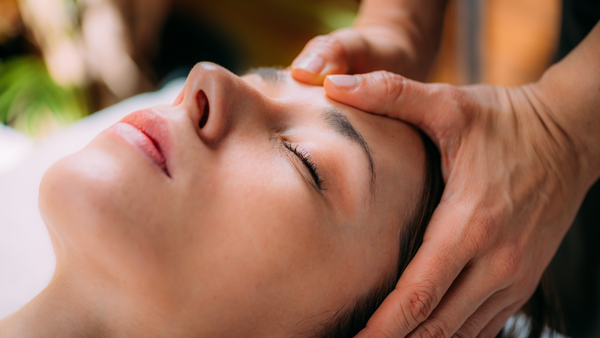Medical massage covers a range of specialized hands-on techniques designed to address pain mobility and recovery, not just relaxation. This article explains how trained therapists use approaches like myofascial release, trigger point work and lymphatic drainage to treat specific conditions and supports you in choosing the right modality for your needs.

Exploring Medical Massage Modalities
Denise Leslie
In the past, massages were typically associated with luxury spas and high-end sports clubs, but today, massage is available in a wide variety of settings. This is largely because we know that massage isn’t simply an indulgence; it can actually have a transformative effect on your health. In fact, many doctors now prescribe medical massages to their patients because of the potential health benefits associated with them.
This blog explores the different modalities of Medical Massage and its benefits.
What is Medical Massage?
As the name suggests, medical massage is a targeted therapy that is leveraged to address specific ailments. Whether you are suffering from an ACL tear, Tennis elbow, or fibromyalgia, your therapist will work with your doctor to address your specific issue.
Medical Massage Modalities
Medical Massage requires a personalized approach that caters to you and your specific needs. This curated approach sets medical massage apart from other massage modalities.
Here are some specific Medical Massage Techniques that your massage therapist might employ:
1. Craniosacral Therapy (CST): This treatment is typically used to remove tension and blockages in the craniosacral system. We use light touches to target and increase the flow of cerebrospinal fluid that surrounds and protects the brain and spinal cord.
Areas of Focus: Leverage this modality to manage stress, treat migraines, and address neck and back pain and other chronic pain.
2. Lymphatic Drainage: The lymphatic system transports lymphatic fluid throughout the body. This fluid contains white blood cells, which help fight off infections and maintain the body's immune response. Lymphatic Drainage helps stimulate the flow of the lymphatic fluid throughout the body.
Conditions addressed: This treatment is used to help oncology patients, post-op surgery, and inflammation and swelling.
3. Myofascial Release: Myofascial release is a technique that involves applying continuous, gentle pressure to myofascial connective tissue to restore an optimal range of motion and eliminate chronic pain.
Typical treatment Areas Include Head (headaches), neck (pain), jaw (pain due to tightness), and back (pain),
4. Neuromuscular Therapy (NMT) is a therapeutic massage targeted to specific muscle areas. Because it is a more specialized form of massage, it requires additional training beyond basic massage training. The goal of NMT is to improve overall mobility.
NMT typically treats back pain, herniated disks, muscles, ligaments, tendons, and knee and hip pain. It can also be effective in treating sports injuries.
5. Orthopedic Massage: Orthopedic massage has a very specific focus on the musculoskeletal system. Prior to the massage, your therapist will assess your range of motion, level of pain, and degree of discomfort or tightness. They will then create a custom treatment plan that typically goes beyond one session. The goal of an orthopedic massage is to target the root cause of pain and restore your body to optimal movement patterns, allowing you to live your life pain-free.
Areas of treatment: Postural imbalance, muscles and joints affected by overuse, and Pre/post-surgical procedures.
6. Sports Massage is a form of massage tailored to the needs of athletes and individuals who are physically active, like weekend warriors. Sports massage aims to prevent injuries, promote recovery, and prepare athletes for peak performance.
Sports massage is good for professional and amateur athletes. Whether you are a gym rat or you play college hoops, find a sports massage therapist near you to help you achieve your goals.
6. Trigger Point Therapy is a therapeutic approach used to alleviate pain and dysfunction caused by trigger points. These points can show up as knots, muscle tightness, or pain, leading to a loss in your range of motion. The primary goal of trigger point therapy is to focus on these points and relieve associated symptoms so that you can return to normal.
This therapy is beneficial for individuals suffering from chronic pain conditions, such as fibromyalgia, tension headaches, or myofascial pain syndrome, as well as individuals with acute injuries or repetitive strain injuries.

The Power of Medical Massage Against Pain and Stress
Medical massage therapy dives deeper than simply easing sore muscles. It delves into the very root of pain, addressing tightness, inflammation, and those pesky muscle spasms that can leave us feeling incapacitated. By loosening tight muscles and strengthening weak ones, medical massage can significantly reduce pain, paving the way for a more effective healing process.
So, the next time you find yourself battling pain or succumbing to stress, consider exploring the world of medical massage therapy. It might just be the missing piece in your journey towards a healthier, happier you.
What Are The Benefits Of Medical Massage?
Medical massage's stress and pain relief properties are merely the tip of the iceberg. In summary, medical massage can:
Ease pain in the body
Reduce stress and anxiety
Enhance sleep quality
Give you more energy
Increase circulation
Improve concentration
Lower blood pressure
Increase flexibility
Better immunity
Reduce dependence on medication
Elevate mood
If you think a medical massage could help you live a pain-free life, talk to your doctor about prescribing one. Contact Medical & Sports Massage today for more information on massage therapy.
About The Author
Denise Leslie is a powerhouse mother, entrepreneur, and advocate for pain-free living. With a passion for healing and promoting health and wellness, As a dedicated therapist, Denise is committed to empowering others on their journey to optimal well-being. She understands the importance of community support and never stops serving those around her.

